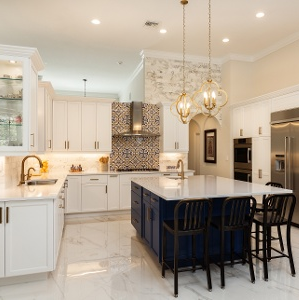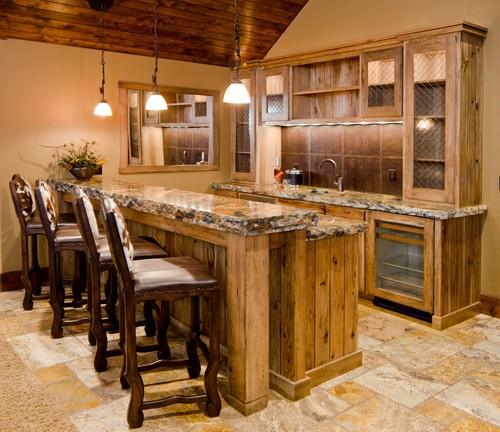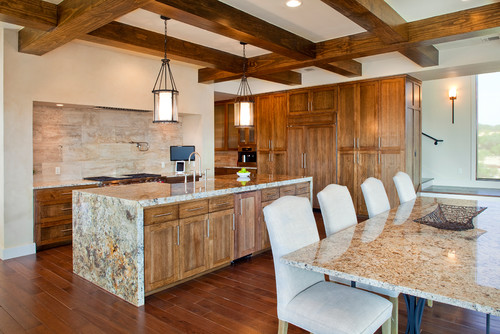Silestone vs. Granite: 5 Differences You Need to Know

The difficulty, as with any home upgrade or addition, is selecting the materials that best suit your needs. When it comes to choosing, Silestone quartz and granite, both resilient, stunning countertop surfaces in their own right, are two surfaces worth comparing. While one is a natural stone (granite) and the other, an engineered stone (quartz), the two are often compared due to their durability, aesthetic and versatility. Sometimes, it can even be difficult to tell the difference between the two stones, especially with Silestone options that look so similar to granite.
How can you decide which surface is right for your kitchen or bath? Here are a few key differences of Silestone vs. granite that could help you make the right choice for you or your client’s home renovation project.
#1: Composition
Silestone is a segment of the family-owned Cosentino Group that export innovative surfaces to over 80 countries. Silestone quartz is comprised of a unique combination of natural quartz crystals and other raw materials and resins.
This isn’t to say that quartz isn’t largely made from natural stone. Roughly 90% of quartz comes from crushed stone, which is mixed with polymers and resins to bind the material together, creating a tough, durable, non-porous surface. Silestone, in particular, features 94% natural quartz. Some products also contain pigments to create a specific appearance.
Granite, on the other hand, is typically made using feldspar and quartz, depending on the variety you select. It is considered a natural stone that has formed over the course of thousands of years under extreme pressure.
#2: Appearance
Although some homeowners are buying the brand, so to speak, when they choose countertop surfaces, others are much more interested in the tangible differences between products, or the practical and aesthetic distinctions. How a product looks is typically pretty high on the list of priorities for anyone looking to improve their home interior.
You may have heard that engineered quartz can be made to look like natural stone, and this is true. Just look at the countertop surface in this contemporary kitchen. At first glance, it looks like a granite surface, with the same dramatic movement and multi-colored appeal.
Some will say, upon close inspection, that the depth and dimension of granite cannot be mimicked. This is hard to argue with when you look at samples of beautiful, natural granite, like the glorious, colorful, brown and gold slab featured in this custom lodge home.
Or, take for example this enchanting grey and gold granite waterfall island and matching table in this Mediterranean kitchen that closely resembles granite.
It’s certainly hard to deny the natural beauty of bonafide granite, but you may find that Silestone looks just as good, even close-up, because the pigments are mixed into the product to mimic the color, pattern, and dimension that’s present in natural stone surfaces, such as granite.
#3: Resilience
But, which surface is going to stand up best under the daily wear and tear of your family members, including kids who are prone to making significant messes?
When it comes to hardness, granite is considered one of the best choices for natural stone, with a Moh’s hardness rating of 6. However, it turns out Silestone is just slightly harder, owing to the fact that it contains no crystalline material that could potentially increase risks of fissures. By the way, it is these crystalline flecks in granite that add the aforementioned depth and dimension that’s so hard to mimic.
As a non-porous surface, Silestone is incredibly resilient. It’s highly resistant to staining, scratches, and chips, and it won’t suffer UV damage. It’s also considered to be an incredibly food-safe surface because it won’t harbor bacteria, mold, or other pathogens.
When properly sealed, granite can prove equally resilient, but it is recommended that you reseal surfaces periodically (say, annually, depending on use). In addition, it’s recommended for homeowners to use special cleaning solvents that won’t cause deterioration or filmy deposits on the sealed surface.
One advantage granite has over engineered quartz is heat resistance, meaning you can safely set hot pots and pans down with no need for trivets. This is due to the resins found in quartz that can only withstand temperatures up to 150 degrees.
#4: Maintenance
Most homeowners prefer materials that are easy to clean and maintain. The good news here is that both of these surfaces require little maintenance. However, with quartz countertops, you don’t even have to worry about the occasional sealing like you would with granite. Quartz is non-porous so you do not need to protect it as you do with granite. Also, quartz does not require special cleaning products like natural stone does.
#5: Cost
You might be surprised to learn that Silestone and granite are similar in cost, and in fact, Silestone could end up costing slightly more. Silestone will typically run you somewhere in the neighborhood of $50-$200 per square foot, depending on the style and options you choose.
Granite tends to run in the $40-$250 range. Depending on what you choose, the cost differences could range from minimal to significant.
Silestone vs. Granite: Which One is Right for Your Home?
We would love to help you pick the perfect countertop material for your next kitchen upgrade or addition. To request a complimentary consultation with one of our design experts, click here.





